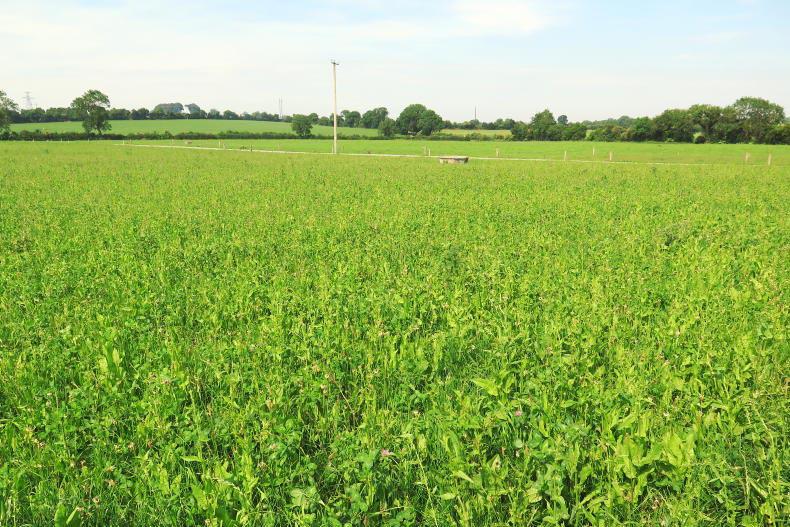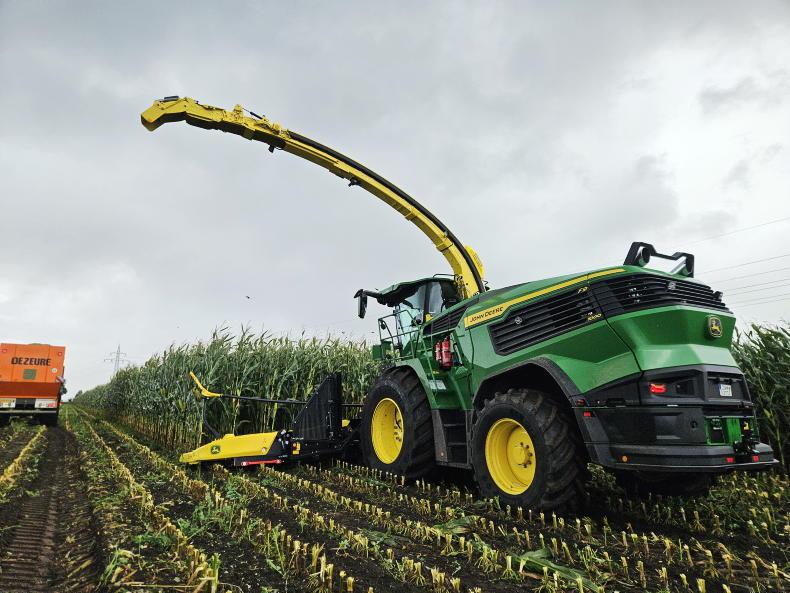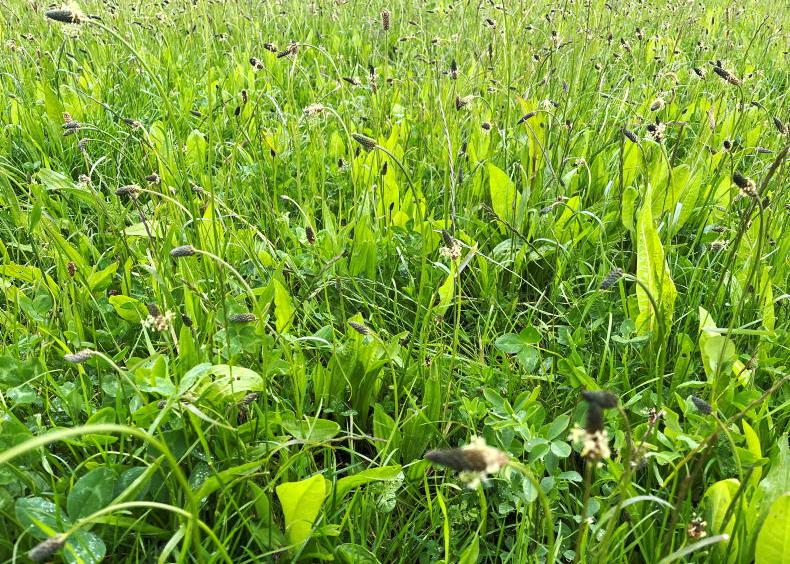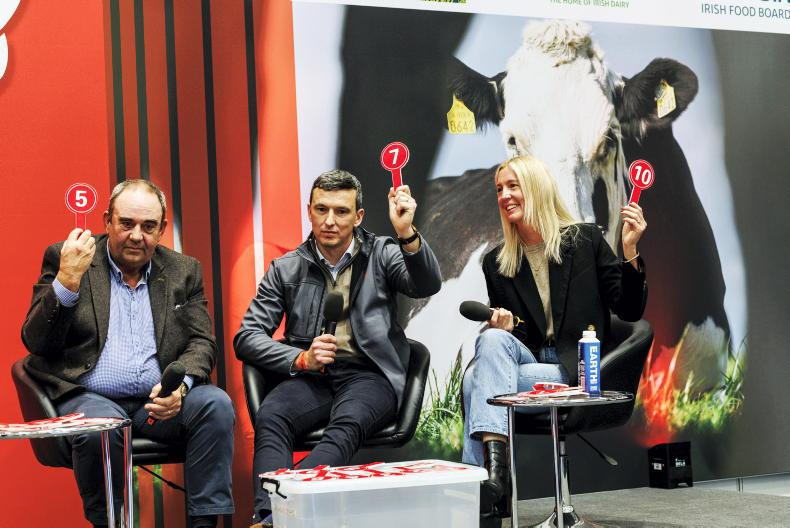Over the past few years, there has been increasing interest in multispecies swards (MSS) as a sustainable source of high-quality forage. A MSS is a mixture of three or more species whose growth characteristics complement each other resulting in improved productivity compared to when each species is grown in monoculture. The species selected for inclusion in MSS typically come from three broad plant groups:
1 Grasses, eg perennial ryegrass, timothy, cocksfoot.
2 Legumes, eg red and white clover, lucerne.
3 Herbs, eg ribwort plantain, chicory.
DLF seeds product manager Thomas Moloney, who is currently undertaking some field trials with MSS, outlined some examples of complementary interactions between grassland species in MSS:
Nitrogen fixation: Legumes can fix up to 150kg N/ha per year for use by neighbouring grasses and herbs (approximately seven bags 18.6.12/acre per year).
Variable root-depth: Deep-rooting herb species extract water and nutrients from deeper down in the soil profile than most grasses. This reduces direct competition between species, leads to greater nutrient-use efficiency and increased drought tolerance.
Seasonal growth: inclusion of summer species like white clover and chicory ensures good herbage production in mid-season when grasses have passed their peak growth rate.
Establishment
Multi-species swards can be sown at any time from late spring to early autumn. The conventional reseeding method of a full plough is the most effective way to establish a new MSS.
However, herbicide cannot be applied to MSS and in this regard, ploughing generally results in a greater proportion of sown species establishing and fewer weeds.
The small seeds of clover, plantain and chicory mean rolling the seedbed to ensure good soil-seed contact is also an important step in establishing MSS from scratch.
Oversowing legumes and herbs into an existing grass sward is an economical alternative method for establishing MSS. As with any oversowing operation, it is important to reduce competition from established plants by sowing into an open sward in which soil-seed contact can be made and light can reach the new seedlings. This can be achieved by oversowing after a silage cut or after tight grazing.
Optimum soil fertility is required to maximise production and soil fertility guidelines for grass swards regarding soil pH, P and K levels should be followed for MSS.
Grazing
The management guidelines for grazing MSS may not be too dissimilar from grass swards, with quality directly related to the proportions of leaf and stem. Rotationally grazing MSS will likely lead to better sward quality, utilisation and persistence than continuous set stocking. Providing animals access to paddocks for a short time (one to three days) will help to maintain sward diversity by preventing the selective- and over-grazing of more palatable herb species.
It is also important to provide a sufficient rest period for MSS to recover from grazing. This may be longer than the conventional 21-day grazing interval recommended with ryegrasses.
The greatest benefit of MSS compared to ryegrass swards comes in the summer and this should be remembered when incorporating these swards into your system. When preparing paddocks for winter it is important not to graze covers too low too late into autumn as species such as red clover and chicory rely on energy reserves built up in autumn to get them through the winter. A closing sward height of 6-8cm should be sufficient. The following spring, MSS should benefit from an initial light grazing to open the sward and encourage growth.
Nitrogen fertiliser application
One of the biggest attractions of MSS is their potential to reduce the requirement for nitrogen (N) fertiliser. Many studies have reported MSS receiving little or no N achieving similar yields to grass swards receiving about 300kg N/ha per year. Achieving such an outcome on-farm will depend on maintaining a decent proportion (20-30%) of legumes in the sward. Large applications of N will have a negative effect on legume persistence. However, a small amount in spring can be useful to feed grass and herb species before legumes begin N fixation in summer. In this case, up to 50kg N/ha early in the growing season should not have a significant negative effect on legume persistence.
Environmental benefits
Many of the processes that lead to the production benefits of MSS are also linked to environmental benefits. The most obvious is the significant reduction in artificial N requirement as a result of legume N fixation.
Furthermore, improvements in soil structure can accrue from the diverse root structure of MSS, which in turn may lead to greater amounts of carbon sequestered over time.
In addition to the obvious benefits of reducing N fertiliser application, studies from New Zealand are finding greater N-use efficiency in MSS compared to fertilised ryegrass swards through lower rates of nitrate leaching associated with the presence of ribwort plantain.
There are still many questions for research to answer regarding the best management strategy for MSS on Irish farms. However, the principles outlined above should help to inform farmers who are considering carrying out their own on-farm research.
In the current drive to reduce inputs without significantly affecting production, the strategic incorporation of MSS into grass systems appears an increasingly attractive option.










SHARING OPTIONS